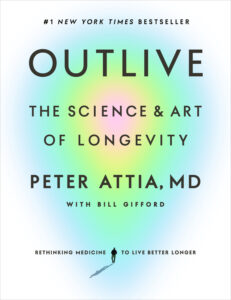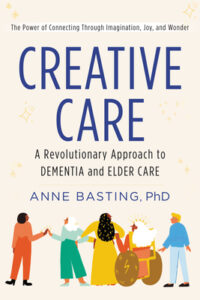I recently read two important non-fiction books that I want to recommend to everyone. Both of the books made me think about things in a different way, and that is always good.
 The first of the two important non-fiction books is “Outlive: The Science and Art of Longevity” by Peter Attia. This is a book I wish I had read when I was in my 20’s, and as soon as I read it I wanted to get it for all my nieces and nephews. Of course, when we are in our 20’s, we think that we will always be healthy and strong. Now that I am in my 60’s, and watching my parents who are in their late 80’s, my perspective has changed. I want to do whatever I can to live as healthy a life as I can.
The first of the two important non-fiction books is “Outlive: The Science and Art of Longevity” by Peter Attia. This is a book I wish I had read when I was in my 20’s, and as soon as I read it I wanted to get it for all my nieces and nephews. Of course, when we are in our 20’s, we think that we will always be healthy and strong. Now that I am in my 60’s, and watching my parents who are in their late 80’s, my perspective has changed. I want to do whatever I can to live as healthy a life as I can.
This is where the book really resonated with me. Dr. Attia focuses on healthspan, not just lifespan. What is the point of living longer if you can’t do any of the things that give you joy? Dr. Attia describes Medicine 1.0 – medicine prior to the use of the scientific method. Then he describes Medicine 2.0 which is medicine where you treat the disease or the symptoms as aggressively as possible. Finally he talks about Medicine 3.0 which focuses on preventing disease and maintaining health.
One of the things in the book that I am paying attention to is the activities I want to be able to do when I am in my 80’s. I want to be able to hike every morning, to lift up a baby from a crib, to carry in my groceries, to open a jar of pickle relish, to get up from being seated on the floor.
Dr. Attia suggests making a list of these activities and then practice functional fitness in order to be able to do them in the future. Getting up off the floor is already hard for me and I look very awkward doing it. So I watched the video on how to get up and now I practice it every day. It turns out I had forgotten how to get up off the floor and I need to remind my body so it feels natural again.
Dr. Attia talks a lot about stability and fitness, but he doesn’t set unrealistic goals for his readers. Instead, he suggests that you do what you can to improve your health. His website is a great follow-up to the book because it has videos of different aspects of functional fitness. He also stresses that our genetic makeup has a lot to do with how we age. We have to learn how to adapt depending on our particular bodies.
Although the book can get a little bogged down in scientific studies, it made me want to find a gerontologist who will work with me as I age. Unfortunately there aren’t enough gerontologists for all of us baby boomers, so I need to be proactive in taking care of myself. There are so many good insights in this book, I continue to think about them and apply them in my daily life.
 The second important non-fiction book is “Creative Care: A Revolutionary Approach to Dementia and Elder Care” by Anne Basting. I started reading this book because my dad was exhibiting some of the signs of cognitive impairment. I have also worked with many parishioners who suffered from Alzheimer’s or dementia. Dr. Basting describes a new approach to caring for our elders, one based on connection and imagination instead of isolation and drugs.
The second important non-fiction book is “Creative Care: A Revolutionary Approach to Dementia and Elder Care” by Anne Basting. I started reading this book because my dad was exhibiting some of the signs of cognitive impairment. I have also worked with many parishioners who suffered from Alzheimer’s or dementia. Dr. Basting describes a new approach to caring for our elders, one based on connection and imagination instead of isolation and drugs.
In some ways “Creative Care” is the opposite of “Outlive.” While “Outlive” is heavy on the science, “Creative Care” is heavy on what works. When we focus on trying to get people with cognitive impairment to get things right, it only increases their isolation. Hearing loss and memory loss are not improved by someone correcting the elder and telling them they are wrong. No matter how lovingly we correct them, they will only be further isolated by the fear of disappointing us or appearing stupid.
“Creative Care” focuses on connection. Dr. Bastings suggests that too many elders are isolated and lonely, which only increases their cognitive issues. In fact, she suggests that we use the term “underconnected” instead of lonely. Lonely suggests that the person who is isolated is at fault. Underconnected suggests that we need to do more to engage elders.
The first two parts of the book are excellent. Dr. Bastings describes her practical research in elder care. Two techniques are described in depth so that anyone can use them. The first is “Yes, and”, an improvisational technique that takes whatever connection an elder makes and runs with it. No correction, just a joyous yes and building on that yes. The second technique is “Beautiful questions” which do not have a right or wrong answer. Both techniques increase connection even in people in skilled nursing care.
The third part of the book describes more in-depth techniques of using fine arts in drawing out the creativity of people with dementia. Choirs, theatrical productions, and art shows are some examples of community-wide ways Dr. Bastings has employed the techniques of creative care. Her non-profit organization, TimeSlips, is working to train individual caregivers, family members, and the staff of care centers in creative care. You can take the free training if you are a friend or family member of an elder. Which I think is most of us!
If I ever have to go into a care facility, I want it to be a place that practices creative care. I used the TimeSlips website to look up a certified care facility in my area. I was shocked to discover that there isn’t a single creative care facility in Ohio. This is unfortunate and I hope it changes in the future. Creative care seems like an opportunity to improve the lives of elders without a lot of expense. And taking care of elders will only become more important and expensive over time.
These two important non-fiction books are ones that I recommend everyone read. Both books will give you something to think about, especially as we age. If we can live with a longer healthspan and participate in creative care, I think the quality of life for all of us can improve.
